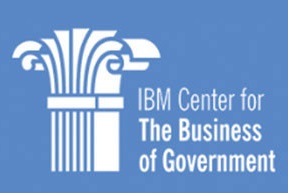

A longstanding analysis partnership among the National Highway Traffic Safety Administration, the MITRE Corporation and several car makers is about to expand.
Best listening experience is on Chrome, Firefox or Safari. Subscribe to Federal Drive’s daily audio interviews on Apple Podcasts or PodcastOne.
A longstanding partnership among the National Highway Traffic Safety Administration, the MITRE Corporation and several car makers is about to expand. The program, called the Partnership for Analytics Research in Traffic Safety, or PARTS, is greatly expanding the datasets it uses in research. The Chief Engineer for Transportation Safety at MITRE, Chris Hill, joined Federal Drive with Tom Temin for the details.
Interview transcript:
Tom Temin: Chris, good to have you back.
Chris Hill: Good morning. Thank you for having me.
Tom Temin: Just review for us what the PARTS program is all about in the first place.
Chris Hill: Yes, so PARTS is all about a data sharing partnership between these eight automobile manufacturers, the National Highway Traffic Safety Administration, with MITRE in the middle serving as the independent trusted third party who collects, aggregates and analyzes the data. It’s really all about trying to understand the effectiveness of some of the new safety technologies that we’re seeing on passenger cars and light trucks these days.
Tom Temin: Got it. So it’s not so much about driver behavior or road conditions and signaling, but about cars themselves.
Chris Hill: Yes, it’s really what are the technologies that are being put on the cars do to improve traffic safety. Now, certainly things like road conditions play a part in that. And a big part of the data we look at comes from police crash reports. So we know what the roads are like. But we’re basically measuring how effective these technologies are in reducing crash severity.
Tom Temin: And what are some of the technologies of note that are designed to make cars more safe?
Chris Hill: Well, there’s a whole suite of them. We particularly are focusing on automatic emergency braking, the technology that will put on the brakes if you’re approaching another vehicle to close in too fast. And we’re looking at various lane management systems, the technologies that make sure your car stays in the center of the lane, does not drift out of the lane, or gives you a warning if there’s something dangerous beside you when you’re trying to make a lane change. But there are other technologies that we will get to in the future as part of the program.
Tom Temin: Yeah, some of those technologies, like when you backup out of a parking space, it consents cross traffic behind you, that kind of thing.
Chris Hill: Yes, there’s a whole range of other things, systems that will detect pedestrians and other vulnerable road users, things like adaptive cruise control that will speed up and slow down your car when you’ve got your cruise set. So yes, lots of things that we can look at going forward.
Tom Temin: So for these two, the automatic emergency braking and the lane management, what is the data sets that are coming in that have to do with those systems?
Chris Hill: Essentially what we’re gathering is we have the eight automobile manufacturers who are providing us with basically the build records for their vehicles out of 40 million vehicles between model years 2015 and model year 2021. We also have coming from NHTSA , the police reported crash reports from nine states. Now the value of the data that we’re getting from the automobile manufacturers allows us to see specifically what technologies are on which specific vehicles that have been level. We can match that data with the data we get from the police crash reports and be able to get an assessment of those vehicles versus unequip vehicles involved in crashes.
Tom Temin: So relative to the launch of PARTS program in 2019, and the difference is the data on the cars that are equipped with those two technologies that you mentioned.
Chris Hill: Yes, we had fewer vehicles involved, about 10 million vehicles for our prototype. And we also limited our analysis to just automatic emergency braking. And we only had six automobile manufacturers back then, we’ve added two more for the second phase.
Tom Temin: Got it. And these are international names, but they all build in North America.
Chris Hill: Yes, they’re all companies that have a North American presence, sell cars into this market.
Tom Temin: And are there any learnings so far with this new data being added in?
Chris Hill: Yes, the first set of analyses that we did around automatic emergency braking demonstrated that vehicles equipped with AB were about 53% less likely to be involved in a rear end collision than vehicles without the technology. Similar results have been found in earlier studies, but we picked that one because we had some sort of baseline to measure against. If we got wildly different results to our analysis techniques, we might have been a little skeptical, but we got very similar results. Now we’re expanding that these other technologies.
Tom Temin: And what will NHTSA do with this information, have they suggested it could lead to a requirement for that type of technology?
Chris Hill: No, really, they haven’t. And the idea is to do this in a collaborative partnership. So each end of learning, NHTSA not flexing their regulatory muscles and simply say let’s all come together and understand better what these technologies can do and understand if there’s anything we need to know or correct with these technologies. And that’s valuable information for the automobile manufacturers, of course.
Tom Temin: And how to get normalize the research, if that’s the correct word, for some of the data is precise and incontrovertible — this car hit that thing or that car and it had this equipment or did not have this equipment — that’s pretty binary. In the case of accident reports, then you’ve got a lot of slippery variables. The road conditions. Was the driver sober? Were they driving too fast at the time? There’s a lot of things that are interpretive that get put in police reports. So how do you bring all that together in a way that you have confidence in the analysis?
Chris Hill: Absolutely. That’s a really good question. And there’s two aspects to that. Of course, there is variability across the dataset. Different officers who respond to a car crash are going to fill in those police reports somewhat differently. And there’s very little we can do to correct for that. What we do do, however, is we do take account of all of those different factors. So whether we look at the different types of environment factor, weather conditions of the road, what type of roadway it was on, things of that nature. And in the dashboard that both NHTSA and the automobile manufacturers get to look at the results, they can play around with those factors. So they can decide to focus on a particular thing, to what extent is slippery road condition having an impact on the results that we’re seeing with that. All of those factors we can take into account, but we take them into account individually and we don’t try to normalize them.
Tom Temin: Because as you add the adaptive cruise control, lane management and other soon to be added technologies, whatever those might be, it gets to be a more complicated equation, there’s more variables to fit in there.
Chris Hill: Oh, absolutely. And we’ve started with just looking at individual features on vehicles. So looking at AB as a technology or lane management as a technology. Where we intend to go in the future is to start to look down to the what we’re calling the attribute level. So obviously, different manufacturers implement these technologies in different ways. They use different sensors, or they have different criteria for when the system kicks in. In our next phase beyond the phase we’re in right now, we want to start to dig into understanding those so that we can give more direct input to the manufacturers about the way they’ve implemented versus another manufacturer. We will also begin to look at that sort of combination of technologies. What are we seeing when we have AB and lane management operating together? But that’s a task for the future.
Tom Temin: Yes, because I was thinking about the two of them operating together because the emergency braking might come in if you don’t pay attention to the lane management or vice versa. You get this interplay that’s pretty hard to measure.
Chris Hill: Yes, that is the same. That’s something we’ll take on and our forthcoming phase.
Tom Temin: So in a sense, you’re using more variables in research, but then it sounds like the addition of the variables is giving light to research techniques as well. It’s sort of a two way street here.
Chris Hill: It is, absolutely. I mean, we’re learning a great deal in terms of how we can analyze these data and what results we can generate. I mean, it’s not simply a case of being able to pump out an answer like 53%, as I mentioned for AB. There’s a lot of joint learning that we are doing with both the government and with the industry partners.
Tom Temin: Yes, because at some point, you’ll have to bring in a new variable of the self driving situation, which for the most part it still means there’s a driver there. But it’s like 90% self driving, and that must be a really wicked problem to try to figure out.
Chris Hill: Yes, and we’ve certainly talked about that future when self driving cars are more available. PARTS is not around to try and solve the self driving problem. We’re not going to do what a lot of people are working on right now, which is to make sure these vehicles operate safely. What we will do once there’s a sufficient penetration of those vehicles out on the roads, then we can certainly add them to the PARTS analysis, means adding different partners probably beyond the traditional automobile manufacturers, but the whole program has been set up to be flexible in that way.
Tom Temin: Chris Hill is chief engineer for transportation safety at the MITRE Corporation. Thanks so much for joining me.
Chris Hill: Thank you.
Copyright © 2024 Federal News Network. All rights reserved. This website is not intended for users located within the European Economic Area.
Tom Temin is host of the Federal Drive and has been providing insight on federal technology and management issues for more than 30 years.
Follow @tteminWFED


